Whether to adopt or shop for your next pet should be an easy decision. Companion pet adoption is not only far more humane and ethical, it saves lives.
Deciding if you’re ready for a pet, or another one
First and foremost, bringing a pet into your family is a serious decision. You must be willing and able to provide shelter, food, medical care and, above all, love. What you get in return is beyond measure. At minimum, ask yourself these questions:
- Who else is part of my household? It’s important to consider the presence of children, elderly family members and other pets you may have. You want any new addition to be a harmonious one.
- What is my lifestyle? Think about your routines and activity level. Are you an active, outdoor type who wants a companion pet to enjoy your athletic pursuits, or are you looking for a buddy to share quiet times at home?
- Do I have time for a pet? Consider if your work schedule or other out-of-home activities means your new pet will be alone most of the day. While some pets might be comfortable with a lot of alone time, younger animals who need training, those with separation anxiety, pets with medical needs or animals who are simply not built to be alone most of the day will not be a good fit for you.

- Can I afford a pet? The costs of food, medical care, supplies and other necessities add up quickly. Average annual pet care costs for dogs for the first year range from $1,300-$1,800, and for cats about $1,000 – in addition to the pet’s adoption fee.
- Is my home life stable? If you are about to move, switch jobs or have other major changes to your home life or actual residence, it’s probably not the best time to adopt. Companion animals, particularly those who may have had a hard life prior to adoption, need stability, structure and routine in order to feel secure and build their confidence.
Unfortunately not all pets find the lifetime of love and care they deserve. Some end up in animal shelters, animal control facilities or with rescue groups, waiting for their forever families. They may have been surrendered, abandoned, abused or otherwise neglected – and many face the prospect of death or permanent homelessness if not adopted.
In spite of these grim facts, bringing a pet into your home should never be a spontaneous decision or one taken lightly.
Where do shelter animals come from?
Some shelter animals were picked up as strays while others were victims of circumstance. Previous owners may have passed away, fallen ill, moved to a residence that did not allow pets, lost their home, changed jobs, got divorced or simply lost interest in their pet. Whatever the case, many pets are surrendered or abandoned – despite the fact that it is illegal in all 50 states to abandon an animal. 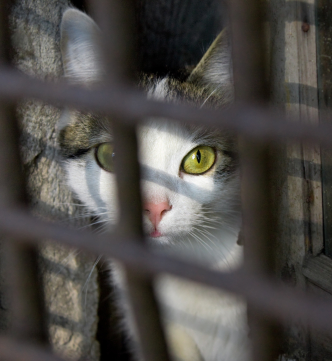
These orphaned animals are equally capable of giving and receiving love as any other pet, and every one of them has a story.
Shelters often have brief descriptions about a pet’s history on their websites, while staff and volunteers may be able to add first-hand accounts of how the dog or cat interacts at their facility with both people and other animals. However, there can be gaps in your pet’s life history, and in some cases – such as animals who were abandoned, found as strays or transferred from other shelters where little was known about them – there may be no information about the animal’s prior life. Many shelters and rescues perform basic screening for behavior and temperament so that they can make the best possible matches in spite of having little or no background on the animal, but this is more art than science.
Be prepared to not know everything about your new pet’s story.
It’s important not to let gaps in a dog’s or cat’s biography deter you from adopting. Pets live in the moment, and going home with you signals a fresh start for a new and happy life. The next chapter of your pet’s life begins with adoption.
Benefits of companion pet adoption
When dogs or cats adopted, they have won the lottery: a good home, a warm bed, toys, food, medical care and love. They return that love unconditionally and without judgment, one of the main reasons people are drawn to companion pets in the first place. Companion pet adoption has distinct advantages over other ways of acquiring a pet:
- Help is available. Shelters have adoption counselors to help you through the adoption process and find the best fit for your family. If your household includes children, other pets or even an elderly family member, prepare for everyone to visit the shelter when you are evaluating specific pets for adoption.
- What you see is what you get: Adult pets are typically house-trained, know basic manners, may even know tricks, and are often already socialized around people and other pets. Be careful about judging an animal’s temperament too quickly though. A shelter can be a high stress environment, so an initially quiet animal may prove to be more energetic once they are home. Refer to the staff and volunteers who have interacted with the animal for insight.
- Variety is the spice of life: Animal welfare organizations offer a wide range of pets for adoption. On average 25% of dogs found in shelters are purebreds. You can find mixed breeds we well, and animals of all ages, size, temperament and medical condition.
- Your pet has received basic health screening. Rescued animals receive basic veterinary care and, in some cases, extraordinary care if they have been sick, injured or abused. In many locales, pets cannot be adopted until they are up-to-date on required vaccinations, and sterilized so as not to contribute to pet overpopulation. While most animals are spayed or neutered before they are adopted, some shelters provide vouchers or other means for new pet parents to fix their pets. Your local animal welfare organization can help you find affordable spay and neuter programs, and may host microchip clinics if you wish to ensure your pet’s safety one step further.
- You may save money. Pet adoption fees are typically much less expensive than the costs to purchase a dog or cat from a retail store, or acquire one from a breeder. The money you save is that much more to budget for your pet’s needs, such as food, medical care and – hopefully – plenty of treats and toys.
- You save two lives. The first life you save is that of the pet you adopt, and each adoption creates space in the shelter for another animal to be rescued. In this way, every adoption spares two lives.
You may think you’re getting all of these benefits when you buy a pet through a retail store, but most of those animals come from puppy mills – mass breeding facilities with notoriously poor conditions for parent animals and their litters. Choosing adoption means less support for these unscrupulous breeders. Some people acquire their pets from legitimate breeders because they are devoted to a particular breed, unaware that many purebreds are available through breed-specific rescues and animal shelters alike.
The pet adoption process
When you are ready to have a pet, or found the dog or cat that’s just right for you, it’s natural to want to take that bundle of joy home immediately.
While adoption processes vary, they can include adoption applications, reference checks, multiple visits with the animal, a holding period and even home visits. This can make simply buying a pet at the store seem appealing, but shelters have these practices in place for a reason: they want to make sure every dog or cat is going a good, responsible home – and you will want to do everything possible to ensure that you and your pet are a great match.
If you want to save the life of a pet who truly needs to be saved, she is more than worthy of a little effort. 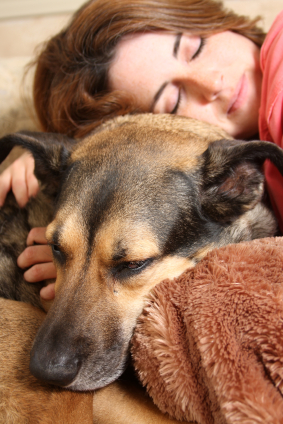
Pet adoption fees help shelters and rescues defray the costs of care while the animal was in their custody, including food, shelter and veterinary care, as well as expenses associated with facility operations, such as staff, insurance, rent, utilities and the like. Fees may help cover transport costs for dogs and cats transferred in from other shelters where they faced fewer prospects of adoption.
In most cases, the adoption fee does not cover the full costs to the shelter; the difference is typically made up through donations, grants and other forms of revenue.
Other ways to help shelter pets
Rescuing an animal through adoption is an extremely rewarding experience. Even if you are not ready to adopt, you can still support homeless animals in your community:
- Encourage friends and family to adopt.
- Donate food, supplies, or money: Shelters advertise what they need on so-called “wish lists;” some of these are common items you may have at home, such as gently used towels, sheets and blankets.
- Volunteer: Contact your local rescue group, shelter or animal control to see what positions they have available, such as dog walking, kennel maintenance, answering the phones or other important tasks. If you have a special skill or talent – such as photography – let them know.
- Attend local events: Animal welfare groups often host fundraisers, adoption events, and mobile spay/neuter or microchip clinics. Find out how you can support their efforts in the community.
- Foster a shelter pet. If for any number of reasons you’re unable to adopt a pet, consider temporarily fostering a dog or cat in your home. Cost of care (food, veterinary bills) are covered by the sponsoring shelter or rescue, and you’ll be helping an animal prepare for his future life as an adoptee. You might even consider fostering a pet for a service member during military deployment.
If you are a veteran considering companion pet adoption, see if we have a program near you.






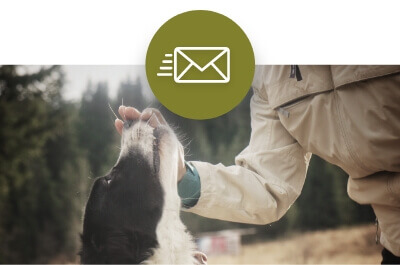
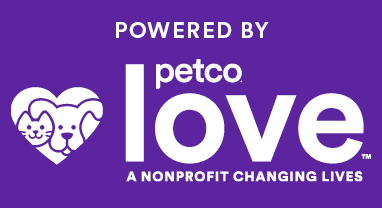


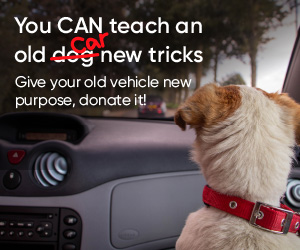
Pet adoption organizations recognize that these orphaned animals are equally capable of giving and receiving love as you said which is why I want to go to one. Since you mentioned that my pet has received basic screening from them, I should have a good reason to go to one next week to look for a pet for me. I do agree that adopting is not enough, so I will be sure to volunteer as you suggested in order to help the people who helped me get a new companion.
I have adopted a new dog ???? and I don’t know my next step
Would you be interested in a 7 year old brown lab to give to a vet for support. He is so friendly and loves company. Follows you where ever you go in the house. I am having surgery in two weeks and need a home for him. He is current on shots and is neutered.
I grew up with dogs. My parents owned Cliff Cairn Kennels. I worked in the kennels,helped w/breeding,whelping and general heath care and training. I loved those little
“Toto” dogs. Then I noticed some aggression. My son,who was just learning to walk,stood up and came face to face with one of my dogs who was on the sofa w/me. The dog turned his head and snapped at my son’s face. I had that dog destroyed that day. My dogs had been acclimated with my son’s room before he was born and after. They were never left alone w/my son and were well trained by me. I could never have trusted that dog again. The other thing I noticed was a “breeding true” problem. Traits were being passed on,such as blindness and aggression with little checks and balances. Then when my son turned 7 he wanted a dog and my first thought was a terrier.. I felt that this type of breed was not suitable for a first dog for a young boy. I had been volunteering w/ the ASPCA and did some research on family dogs. I also remembered from dog shows,the retriever type dog. I did not want a golden,mostly because of the coat,so I focused on Labs. I very much wanted to rescue a dog,especially after seeing so many wonderful dogs being destroyed. So we went to the ASPCA and found our “Andi Dog”. He was about 5 weeks old and covered in tar. He had been abandoned at a truck stop a week before and needed more care than they could give him at the shelter. I wrapped him in my old sweatshirt and took him to a vet. It took a full week of daily visits to get the tar out from between his paws and teeth. Even though we got him primarily for my son,Andi became my shadow and my joy. We sort of trained each other and a love story began. I had never had a dog who knew me so well. I have chronic depression and he always knew when I was down and he would go nuts trying to make me laugh. One of his favorite toys(other than cases of tennis balls)was an empty plastic water jug. He would chase that thing as if it was alive. He never tried to eat them(like he did my mittens one winter),just chase them. He could never decide what to do with squirrels. We tried to call them “SQ’s”,but he figured out what we meant and still went nuts. Once a month we would all go to a fast food restaurant and got him a plain cheeseburger(he did not like pickles),we would have his burger put in a bag and he would sit in the back seat holding the bag,carry it into the house and then tear it apart! Cookie was another word we has to avoid and every time we tried to switch words he would figure it out. When it rained we had to set up a mini pool to help wash off the mu,my lord he loved the mud. We had Andi for 12 years. He had severe hip dysplasia and when he could no longer get up on the bed,he would lie on the floor and cry. He also began to develop pain in his other joints. He was almost as important to me as my son,but it was unfair to him to let him suffer so I could have him around. He is buried in my back yard. I lost my husband 10 yrs ago,so it’s just me and my son. We miss them both so much. I will probably never have another dog. I’m getting up in years and I am well aware of the responsibility of dog ownership. I follow the Lab rescue site online and troll the local pound puppies. If I can find another Andi,I just might. Perhaps an old man or lady to keep me company. One of these days………